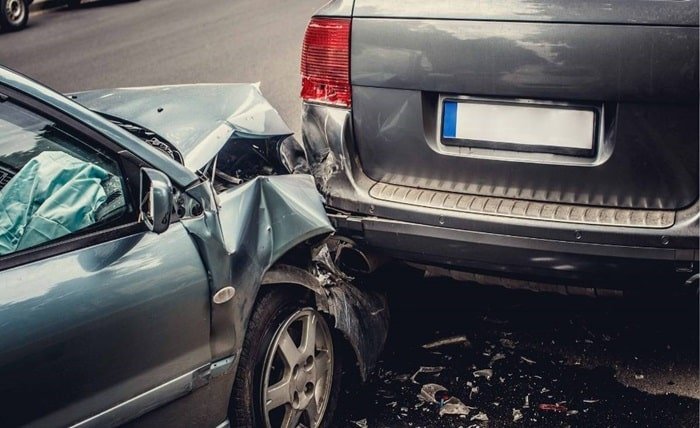Car Accidents Uncovered: A Deep Dive Into Their Common Causes

Car accidents are a significant concern for drivers, passengers, and pedestrians alike. With millions of vehicles on the road, the potential for accidents is ever-present, and understanding the common causes behind them can go a long way in preventing them. In this blog post, we’ll explore some of the primary factors contributing to car accidents, shedding light on the causes that might be closer to home than we think.
1. Distracted Driving: The Leading Culprit
Distracted driving is, by far, one of the most prevalent causes of car accidents today. With the advent of smartphones, in-car entertainment systems, and other distractions, it’s easy for drivers to lose focus on the road. Texting, checking emails, adjusting the GPS, or even engaging in a conversation with passengers can take a driver’s attention away from the critical task of operating a vehicle safely.
According to the National Highway Traffic Safety Administration (NHTSA), distracted driving was responsible for nearly 3,000 fatalities in a single year. While technological advances have made life easier, they’ve also introduced new dangers to road safety. Drivers must make a conscious effort to limit distractions—putting phones on “Do Not Disturb” mode and ensuring all navigation systems are set before hitting the road.
2. Speeding: A Recipe for Disaster
Speeding remains one of the leading causes of car accidents and fatalities. Drivers who exceed the speed limit or fail to adjust their speed according to road conditions are more likely to lose control of their vehicle. The faster you drive, the less time you have to react to potential hazards, such as a car stopping suddenly or a pedestrian crossing the road.
Speeding also exacerbates the severity of accidents. When vehicles collide at higher speeds, the force of the impact increases, leading to more serious injuries or even fatalities. Drivers should always be aware of speed limits and adjust their speed based on weather conditions, traffic flow, and the road’s condition.
3. Drunk Driving: A Dangerous and Preventable Risk
Drunk driving remains one of the most dangerous and preventable causes of car accidents. Alcohol affects a driver’s ability to make sound judgments, slows reaction times, and impairs coordination—critical elements for safe driving. Even small amounts of alcohol can significantly compromise a person’s ability to drive, turning them into a dangerous risk to themselves and others on the road.
In the U.S., drunk driving is responsible for a large share of car accidents, leading to thousands of fatalities each year. To prevent this, it’s crucial to never drive under the influence of alcohol or drugs. If you find yourself intoxicated, opt for alternative transportation, such as taxis, ride-sharing services, or a designated driver. Additionally, in Utah, individuals arrested for drunk driving may find themselves needing assistance with bail. A bail bond service can help get someone out of jail while awaiting trial, allowing them to make arrangements for legal defense and other responsibilities. Always remember, the safest choice is to avoid getting behind the wheel while impaired.
4. Weather Conditions: A Hidden Danger
Weather conditions like rain, snow, fog, and ice can significantly affect driving safety. Slick roads and reduced visibility make it harder for drivers to maintain control of their vehicles. Many accidents occur during inclement weather, especially when drivers fail to adjust their driving behavior accordingly.
For example, when roads are wet, tires have less traction, making it easier for a vehicle to hydroplane. In winter, icy patches can be hard to spot, and stopping distances increase. In foggy conditions, visibility may be limited, increasing the chances of a collision.
During adverse weather conditions, it’s important to slow down, increase following distances, and use headlights. If conditions are particularly severe, consider delaying travel until the weather improves.
5. Running Red Lights and Stop Signs: A Risky Decision
Disregarding traffic signals and stop signs is a dangerous behavior that leads to numerous accidents, particularly at intersections. Running a red light or failing to stop at a stop sign can result in T-bone collisions, which are often severe due to the side-impact nature of the crash.
Drivers who run red lights or fail to yield at stop signs are often rushing, impatient, or simply not paying attention. This kind of reckless behavior endangers everyone on the road. The best way to avoid this type of accident is to obey traffic signals, never rush through intersections, and always look both ways before proceeding.
6. Driver Fatigue: When Tired Eyes Take the Wheel
Fatigue is an often-overlooked but serious factor in car accidents. Drowsy drivers have impaired reaction times, decreased focus, and a reduced ability to make sound decisions. According to research, driving while fatigued can be just as dangerous as driving under the influence of alcohol.
Driver fatigue is especially prevalent on long road trips, during late-night driving, or for individuals working long shifts. If you’re feeling drowsy, pull over at a rest stop or take a short nap. Never push yourself to continue driving if you’re too tired to be alert.
7. Tailgating: A Risky Behavior
Tailgating, or following too closely behind another vehicle, is another common cause of accidents. It’s easy for a tailgating driver to become too close to the car ahead, leaving insufficient time to react if the vehicle suddenly brakes. This can result in rear-end collisions, which, although often less severe than other types of crashes, can still lead to significant injuries.
To prevent tailgating, maintain a safe following distance of at least three seconds behind the vehicle in front of you. In inclement weather or heavy traffic, increase this distance to allow for greater stopping time.
In Conclusion
While many causes of car accidents are out of our immediate control, such as poor weather conditions, drivers can make a significant difference by avoiding common mistakes like distracted driving, speeding, and driving under the influence. The key to preventing accidents lies in awareness, responsible driving, and adhering to traffic laws and safety practices. By being proactive and vigilant on the road, we can all contribute to safer driving environments and reduce the occurrence of preventable accidents.





